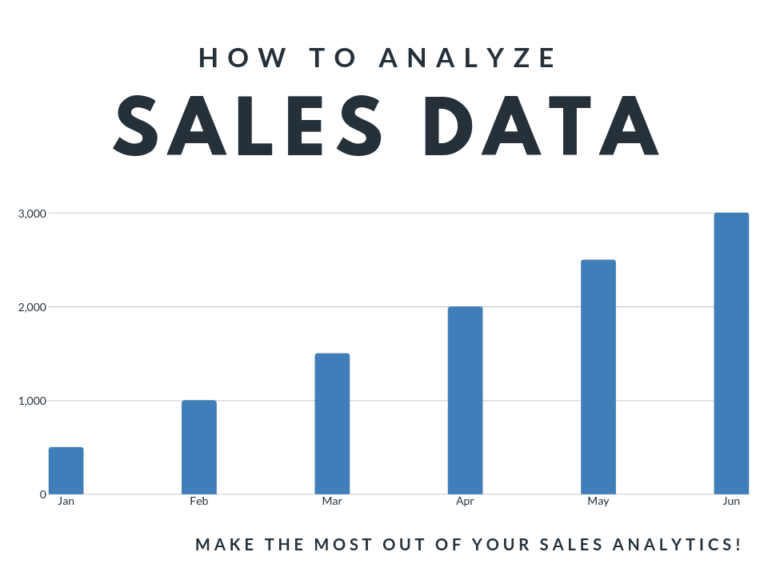
A sales analysis is a detailed report that shows a business’s sales performance, as well as customer data and generated revenue.
The report defines the strengths and weaknesses of products and sales teams by referencing historical and current metrics to detect emerging trends that are most relevant to a company.
Typically, a sales analysis is mostly comprised of quantitative data, such as key performance indicators (KPIs) and charts. Here we are going to find insights about those KPI’S :
- Sales per month
- Sales Per city
- Number of orders per hour
- Products most often sold together
- Which products are sold the most with a price correlation
I also created a little function that allows an employee to enter an item and returns a graph of the quantity ordered per months for this specific item.
The data are from https://eforexcel.com/wp/downloads-18-sample-csv-files-data-sets-for-testing-sales/
I proceeded to rename the data in individual files and merge the CSV.
Here is the github file : https://github.com/JojoRavail/Data_Science/blob/main/Sales_analytics/SalesAnalysis.ipynb

- Description : Sales in the US per months
- Method :
- Parsing the Order date with pd.datetime
- Create a Month attribute
- Extract the price in dollar from 11$ to float(11.0)
- Groupby Month and aggregate with sum()
A trend is appearing here around May and by the end of the year.
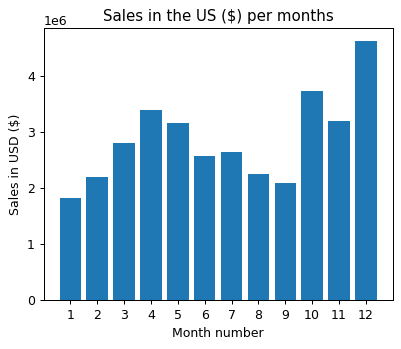
- Description : Sales in the US per city
- Method :
- Creating a city attribute by splitting the address
- Groupby city and aggregate with sum() on sales
For this business it’s pretty clear that SF, LA and NYC are the top cities to sell your products.
A deeper analysis can explain why those cities are the main costumer, higher wages ? different purchasing behavior ?

- Description : Number of orders per hour
- Method :
- Parsing the order hour with datetime
- Groupby hour and aggregate with count()
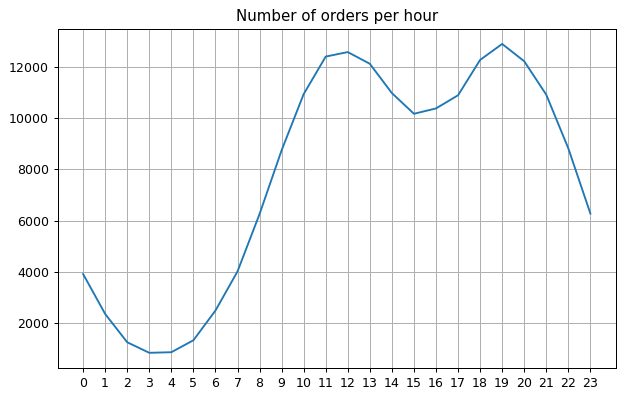
- Description : Products that are mostly sold together
- Method :
- First create df, a Dataframe created with only the rows who match another row on the Order Id feature
- select rows if the Orderid attribute appear several time
- Create the attribute ‘Grouped’,where the products belonging to the same OrderId are being joined.
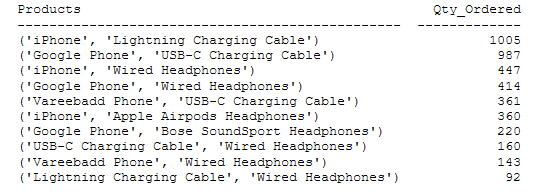
- Description : Number of orders per products during a full year and their price
- Method :
- One groupby product and sum of orders
- groupby products and aggg with average price

- Description : Number of orders per products and per month
This can be a useful application regarding supply chain, even if it’s very basic you can potentially extract information about the yearly purchase distribution for each products.
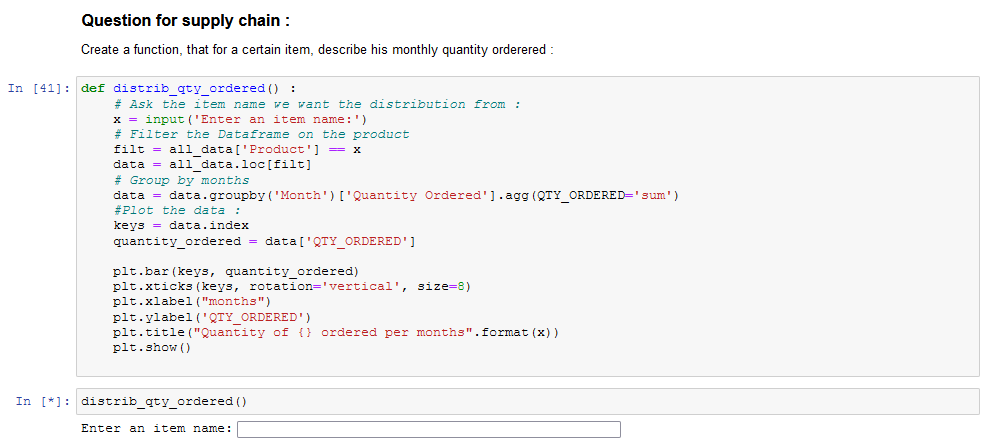


You need to get upset! Get motivated and get pissed off. Now this will let you take the next steps to becoming successful.